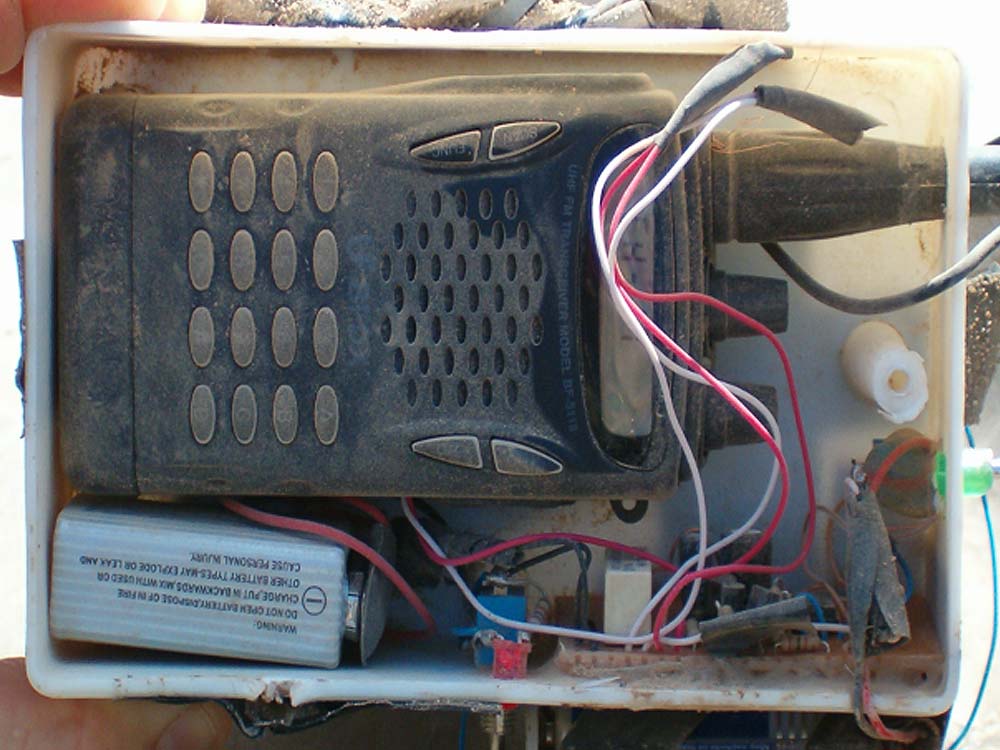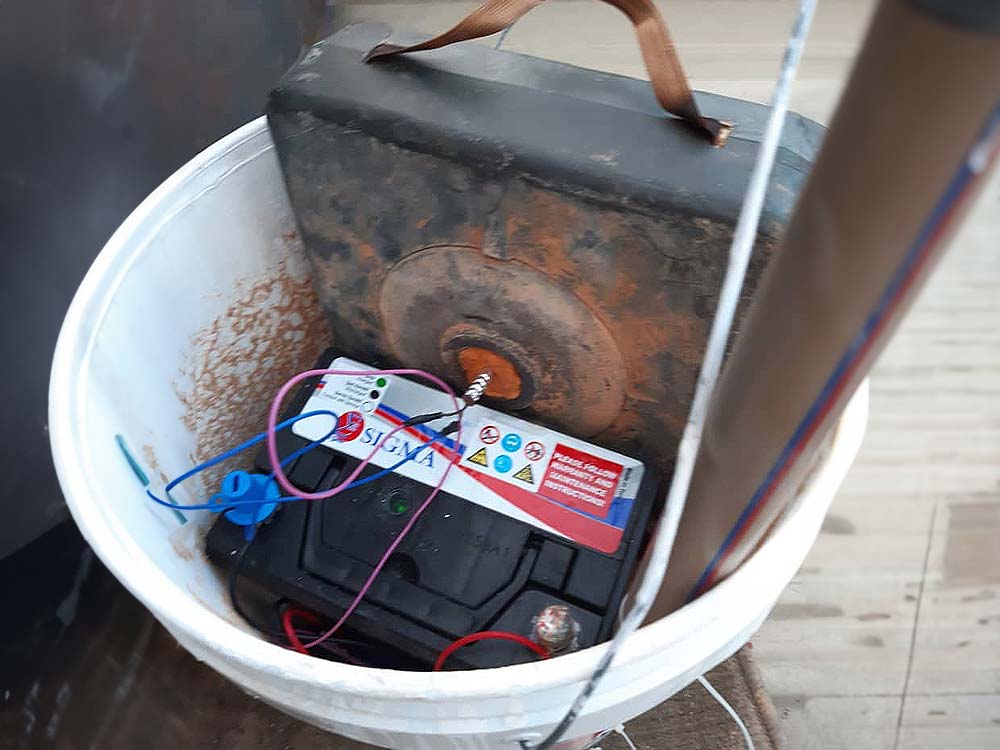IMAS IEDD Level 1 - 3+
EXPLOSIVE ORDNANCE DISPOSAL
IMAS IEDD Level 1 - 2 Syllabus
-
High Risk Searcher and Assistant Operator
The field of Mine Action is increasingly being called upon to mitigate the humanitarian effects of the widespread use of Improvised Explosive Devices (IEDs) in recent conflicts. Instructors with extensive operational experience teach the combined IMAS IEDD Level 1 (Search) and Level 2 (IEDD Assistant) course. These instructors are experts in locating, identifying, and safely disarming IEDs in some of the most dangerous conflict zones around the world.
The course is designed for individuals who already have IMAS Explosive Ordnance Disposal (EOD) Level 2 qualifications or equivalent, recognized military or law enforcement EOD and IEDD credentials.
It is particularly suitable for those seeking to advance their skills and increase their employability in both national security and humanitarian IEDD operations. -
Skills, Knowledge and Methodology Qualifications and Outcomes
Upon successful completion of this integrated course, participants will have gained the necessary knowledge, skills, and methodologies aligned with IMAS 09:31 standards:
- The Level 1 (IEDD) certification empowers individuals to grasp the wider threat landscape, engage in Threat Assessment and Analysis, recognize IEDs specific to their training context, prepare IEDD equipment, and, under guidance, participate in IED searches as part of a clearance team. Level 1 holders may assist in executing semiremote actions under the direction of a qualified supervisor but are not authorized to plan or execute render safe procedures.
- Beyond the competencies acquired in Level 1, the Level 2 (IEDD) certification further qualifies individuals to critically assess and understand the evaluated threats. Level 2 operators are trained to oversee the preparation of IEDD equipment and, with oversight, execute remote or semi-remote methods to detect IEDs. However, Level 2 personnel do not possess the qualifications to plan or execute render safe procedures.
-
Eligibility to qualify for Lv. 1 -2
To be successful throughout the stages and become an IEDD Assistant Operator one has to pass theoretical and practical assessments.
Important stages are:- Threat Assessment and Threat Analysis
- IEDD Equipment Preparation and Maintenance
- IED Search, Team Search and under Supervision
- Preparation and Application of Remote & Semi-Remote Techniques to locate IEDs (supervised)
Course Duration
Level 1 & 2 - 3 Weeks
(15 days)Target Audience
Humanitarian Demining Personnel EOD Level 2 Field Operators, Military and Police EOD Specialists, National Authority Staff, Technical Field Staff, e.g
High Risk Searcher Level 1 and Assistant Operator Level 2
Curriculum Overview
- Theory & Knowledge: Electrical Theory, SOP Framework and Referring up, IEDD Principles and Philosophy, Threat Assessment, IED Makeup (Components) and Types (e.g. Time, Command, VO and Booby Trap), Explosive Theory, Demolition Procedures, Disruption Techniques (Basic Disrupter Theory and Danger Area Awareness), Search Techniques and Safe Access, Secondary and Tertiary Devices, Transportation of EO, Survey Techniques, Task Conduct.
- Equipment & Skills: Demolition Accessories and Explosives, Hook & Line Kit, Semi Remote Basics (Disrupters & cutters), Use of Detectors, Preparation of Metal Detectors/GPR, Weapon Preparation, Cameras and GPS, PPE, Maintenance (Personal & Team Equipment), Limits and Deviation (Knowledge of Limitations, etc.), Mechanical Techniques (Banksman), IEDD Tools.
- Reporting & Data: IMSMA Terminology, Reporting Requirements, Reporting, Mobile Apps, Technical Analysis, Theatre Specific Device History (Interpretation of Risk Management data).
- Practical IEDD Skills: Danger Areas and Task Geography, Application of SOPs, EOR, Search Skills, Vehicles (CBRN Recognition), Awareness of Threat Environment.
- Management & Leadership: Equipment Management, Manage Operational Pressure, Continuation Training, Legal Framework, Task Management and Planning, Human Factors.
- Deployment & Post Tasks: Pre-Task Actions, En-Route Actions, Post-Task Actions.
IMAS IEDD Level 3 Syllabus
-
Field Operator
The Level 3 IEDD course is designed for advanced skill development in IED threat management. It focuses on strategic planning and execution of render safe procedures, incorporating advanced threat analysis, operational leadership, and coordination skills.
This level is tailored for those who aim to take on higher responsibility roles in IEDD operations, requiring comprehensive understanding and execution of complex IEDD strategies and techniques.
-
Skills, Knowledge and Methodology Qualifications and Outcomes
Level 3 culminates in managing and executing all facets of an IEDD task, encompassing the location, identification, safe rendering, and disposal of all IED types in both urban and rural permissive Humanitarian Mine Action (HMA) environments.
-
Target Audience
EOD Operators, Military and Police EOD Specialists, Humanitarian Demining Personnel (Operations and Program Managers), National Authority Staff, Technical Field Staff, e.g.
Must hold EOD Level 3 and IEDD Level 2 qualification.
Course Duration
Level 3 - 4 weeks
(20 days)
-
Eligibility to qualify for Lv. 3
To qualify for the IMAS IEDD Level 3 certification, candidates must successfully complete both theoretical and practical assessments in all areas outlined in the core curriculum. Key areas of focus include:
- In-depth understanding of IED philosophy, principles, and procedural knowledge.
- Proficiency in questioning techniques and conducting thorough threat assessments.
- Effective handling of High Threat IED Disposal (HIED-D) tasks, encompassing the clearance of time, command, victim-operated, and hybrid IEDs.
- Skilled use of remote-operated vehicles, drones, and disruptors in IEDD operations.
- Mastery of safe excavation and semi-remote pulling techniques, both individually and as part of a team.
- Competence in manual IEDD render safe procedures.
Field Operator Level 3
Curriculum Overview
- Theory & Knowledge: Electrical Theory, SOP Framework and Referring up, IEDD Principles and Philosophy, Threat Assessment, IED Makeup (Assessment, In-depth understanding) and Types (e.g. Time, Command, VO and Booby Trap), Explosive Theory, Demolition Procedures, Disruption Techniques (Detailed Knowledge of weapon effect and use of cutters and placement), Search Techniques and Safe Access, Secondary and Tertiary Devices, Transportation of EO, Survey Techniques, Task Conduct.
- Equipment & Skills: Demolition Accessories and Explosives, Hook & Line Kit, Semi Remote Techniques (Disrupters & cutters, Clear command and control), Use of Detectors, Preparation of Metal Detectors/GPR, Weapon Preparation, Cameras and GPS, PPE, Maintenance (Personal & Team Equipment), Mechanical Techniques (Plan and Supervise), IEDD Tools.
- Reporting & Data: IMSMA Terminology, Reporting Requirements, Reporting, Post Blast Analysis, Mobile Apps, Lessons Learned, Technical Analysis, Theatre Specific Device History (Identify, submit, adjust and improve pertinent data; Lead in whole process of risk management and briefing them adequately).
- Practical IEDD Skills: RSP formulation and planning, Danger Areas and Task Geography, Question Technique, Weapon Placement, Application of SOPs, EOR, Search Skills, Vehicles (Adjust Scenario & request 3+), Low Explosive Procedures, Final Demolition, AFV Clearance, Awareness of Threat Environment.
- Management & Leadership: Liaison and provision of HIEDD Advice, Equipment Management, Manage Operational Management, Continuation Training, Legal Framework, Task Management and Planning.
- Deployment & Post Tasks: Route Planning & ICP, Pre-Task Actions, En-Route Actions, Post-Task Actions, Remediation.
IMAS IEDD Level 3+ Syllabus
-
Technical Advisor
This qualification expects a technician field expert with in-depth knowledge, skills and leadership tools to plan, manage and conduct complex clearance operations and supervise field operator personnel according to International Mine Action Standards as well as provide expert advice to national authorities, donors, organisation chairs and legal experts.
As a Level 3+ Technical Advisor, one is tasked with the planning, implementation, and development of advanced training programs that transcend standard procedures. In the dynamic landscape of threat management, such a role requires one to maintain a leading edge in the development of equipment, procurement strategies, and threat assessment methodologies. By staying abreast of adversarial Tactics, Techniques, and Procedures (TTPs), the advisor provides critical guidance in the formulation of programs and the evolution of Standard Operating Procedures (SOPs).
-
Course Duration
Level 3+ - 3 weeks
(15 days) -
Target Audience
IMAS EOD Level 3(3+) / IEDD Level 3 Field Technicians, Military and Police EOD Specialists.
-
Skills, Knowledge and Methodology Qualifications and Outcomes
The IEDD Level 3+ certification represents the highest level of expertise in the field of Improvised Explosive Device Disposal (IEDD). This advanced level builds upon the competencies acquired in Levels 1 to 3 plus years of experience both as a IEDD Operator and Instructor for IEDD and is designed to address the complex and evolving challenges faced in the field particularly in the context of IEDs.
-
Eligibility to qualify for Lv. 3+
This level represents the pinnacle of IEDD expertise, it encompasses a comprehensive and advanced skill set that is crucial for the certification and the following slate of in-depth expertise:
- 1. Comprehensive Knowledge of IEDs: An in-depth understanding of various types of IEDs, their components, and mechanisms.
- 2. Advanced Threat Assessment and Risk Management: Evaluating and managing the risks associated with IEDs in different environments, including urban and rural settings.
- 3. Strategic Operational Planning: The ability to develop and implement strategies for IEDD operations, including coordination with other security and humanitarian efforts.
- 4. Technical Proficiency in IEDD Techniques: Advanced skills in the location, identification, disarming, and disposal of IEDs, including the use of specialized equipment and techniques.
- 5. Leadership and Supervisory Skills: Capability to lead IEDD teams, supervise complex operations, and provide training and mentorship to less experienced personnel.
- 6. Data Collection and Analysis: Proficiency in gathering operational data, analysing it for patterns and trends, and using this information to improve IEDD practices and strategies.
- 7. Problem-Solving and Decision- Making: Exceptional ability to make critical decisions under pressure, particularly in high-risk environments.
- 8. Adaptability and Innovation: The capacity to adapt to evolving threats and to develop innovative solutions to new challenges in IEDD.
Technical Advisor Level 3+
Curriculum Overview
- Theory & Knowledge: SOP Framework and Referring up, Threat Assessment, IED Makeup and Types (Horizon Scanning), Demolition Procedures, Search Techniques and Safe Access, CBRN, Transportation of EO, Task Conduct.
- Equipment & Skills: ROV/Robots, Radiography Techniques, Electronic Safety Jamming, CBRN Detectors, Mechanical Techniques (Plan Primary Mechanical Clearances).
- Reporting & Data: Reporting Requirements, Reporting, Mobile Apps, Lessons Learned, Technical Analysis, Theatre Specific Device History.
- Practical IEDD Skills: Search Skills, Vehicles (Clearance; Full Remote/Semi-Remote), CBRN Procedures, AFV Clearance (Clearance), Dead Body Clearance.
- Management & Leadership: Liaison and provision of HIEDD Advice, Manage Operational Pressure, Continuation Training, Procurement, Procurement and Evaluation.
- Deployment & Post Tasks: Route Planning & ICP, Pre-Task Actions.




